
Amplifier Controller
For my tiny 30w MOSFET and LDMOS amplifier equipped with LPF, i need few features in order to operate smoothly and securely this device.
-Amplifier control : Temperature , SWR , Bias , Current & Voltage control with alarm and security trigger using an ARDUINO NANO.
The full package : Gerber , BOM, kicad , pictures, and arduino Sketch for the main controller and the SWR bridge : https://drive.google.com/file/d/1OAA3AwHDP3Jk_RUIIhog9YnVMdybFQ75/view?usp=sharing
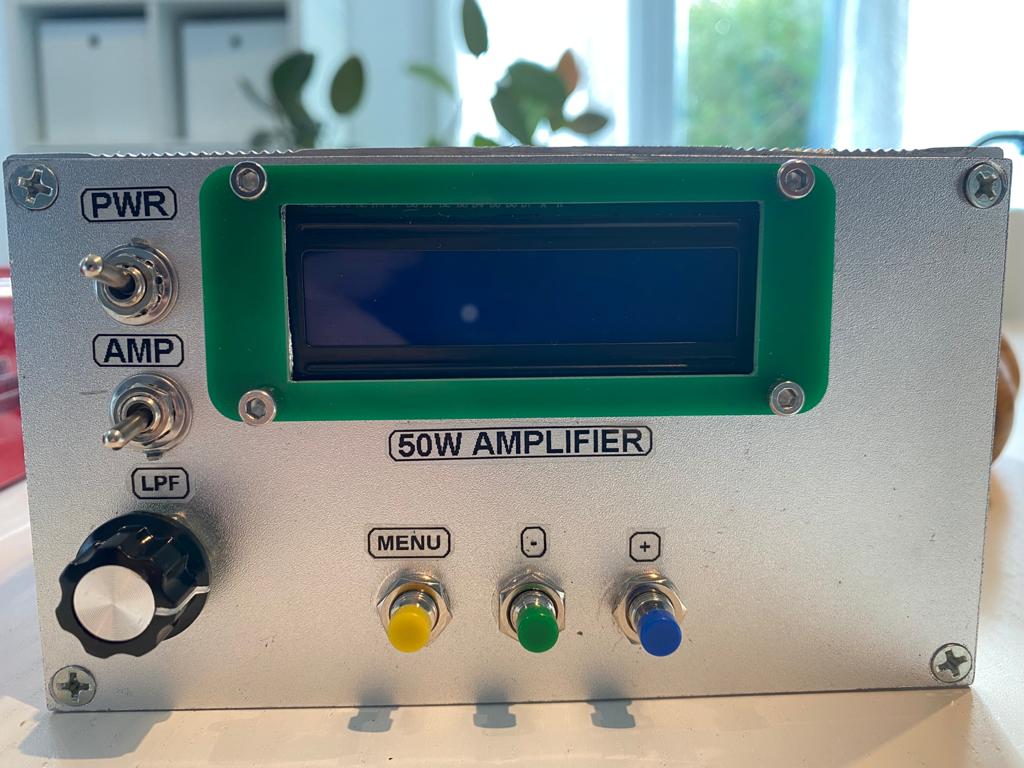

The controller is monitoring the amplifier current and obviously the SWR and output power
- The amplifier is biased with 3.7vdc with about 70ma quiescent current –> input power is 1w for about 40 up to 55w output
- The controller is providing the following capabilites:
- Temperature monitoring with dedicated menu to adjust the threshold to trigger a 12vdc Fan
- Current monitoring with a dedicated menu to adjust the max amp (Limitation) in order to cut-off the biasing with an opto relay when the current is too high
- A dedicated menu for the Max SWR adjusment –> It will trigger the opto relay to cut-off the biasing
- A dedicated menu to adjust the output power range you want to monitor . Since the power is about 50w , my adjusment is 100w which is tailoring the bargraph display accordingly.
- Using FT50-43 toroids and 5w 50ohm resistor, the SWR bridge able to handle up to 1Kw
Currently i am using MOSFET amplifier for 3 years with this kind of controller with another amplifier and working perfectly.
https://easyeda.com/F5NPV/swr-meter
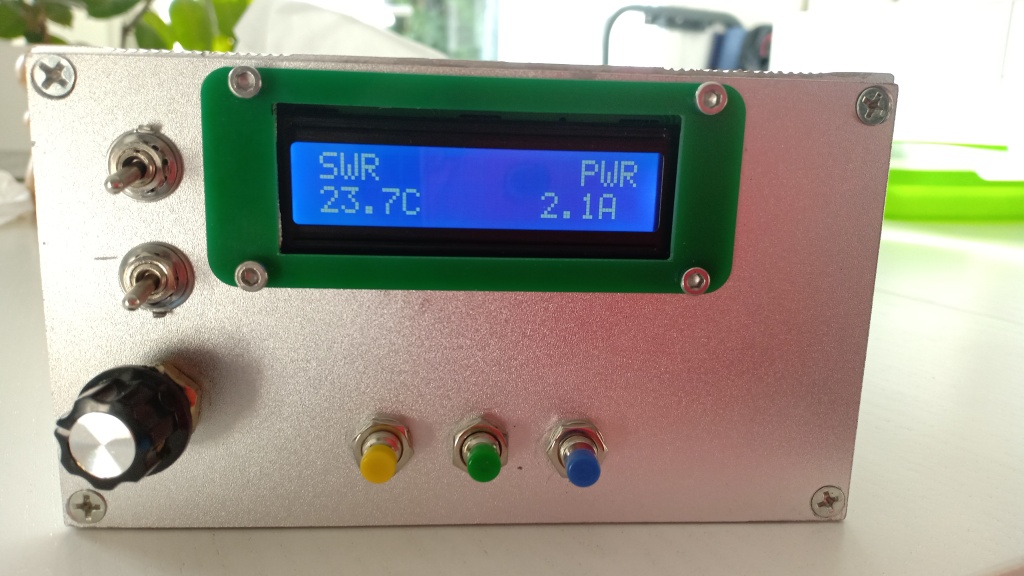

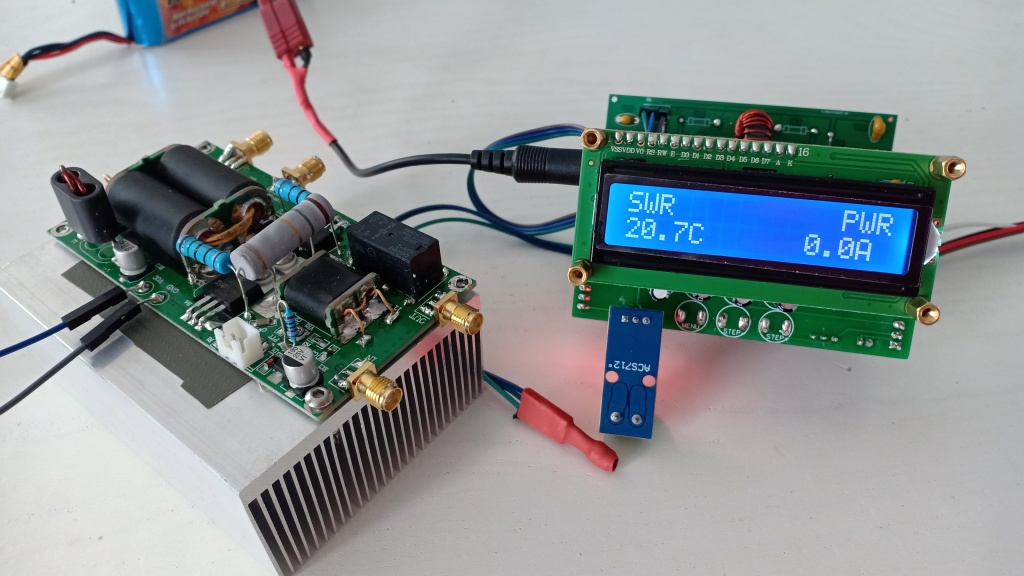
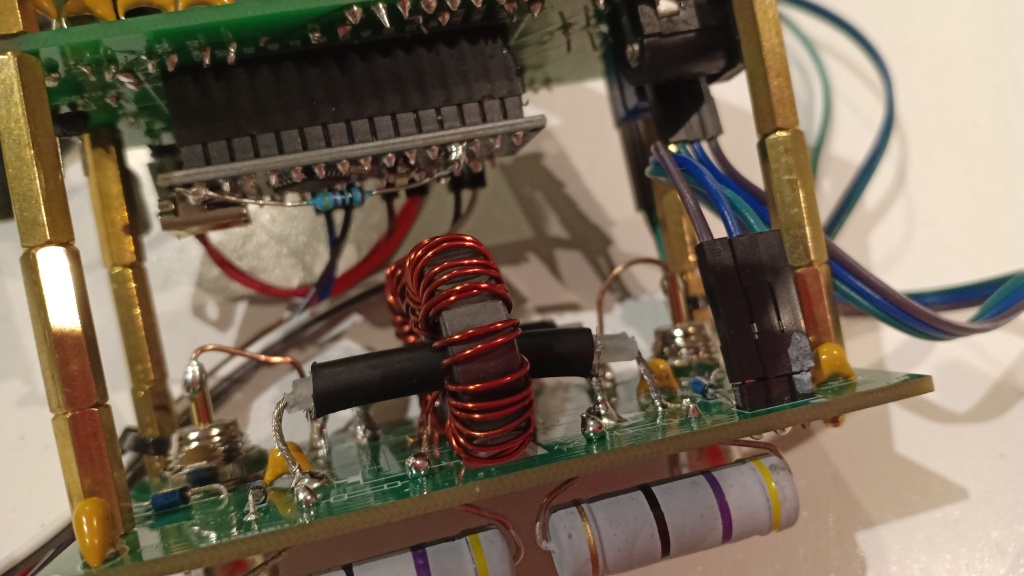
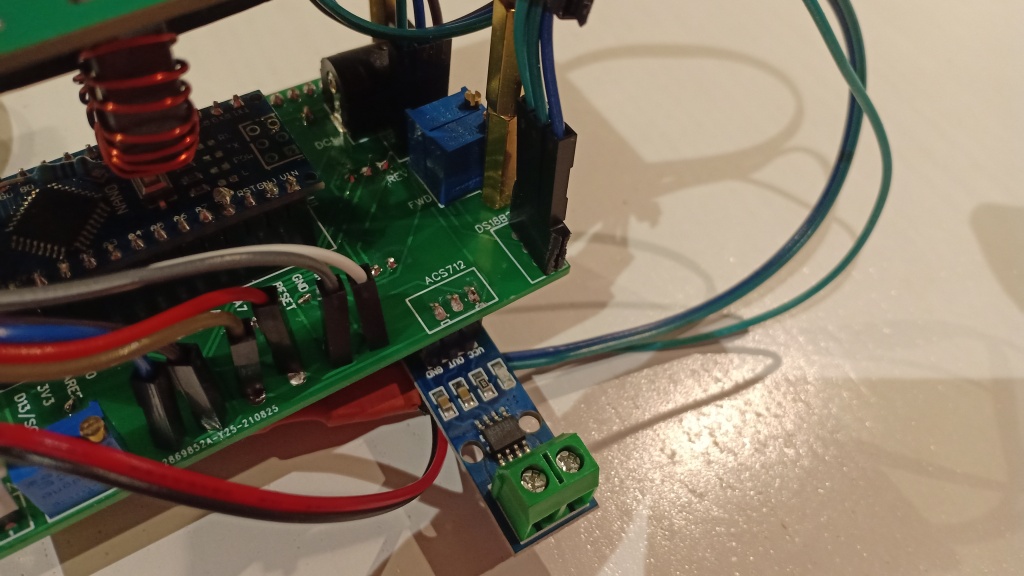
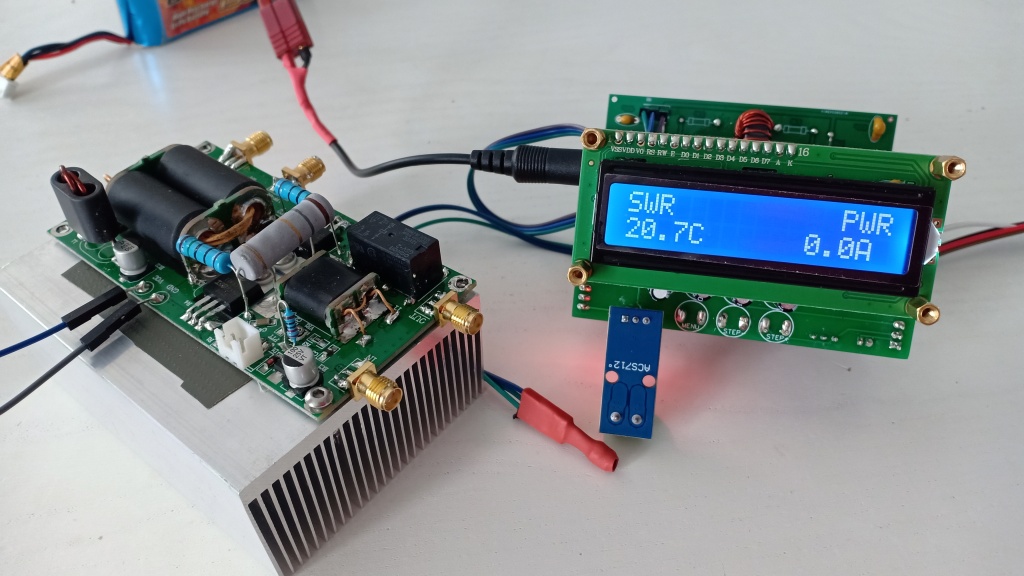
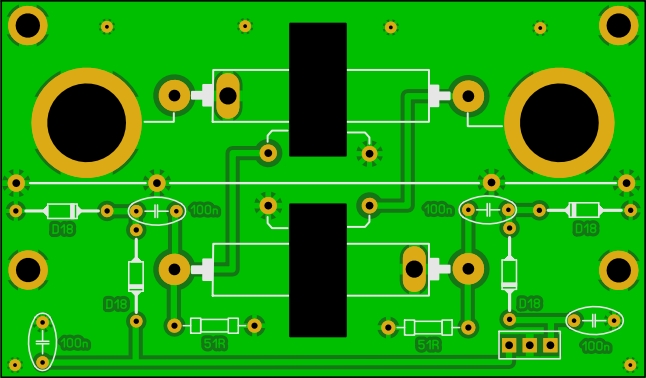
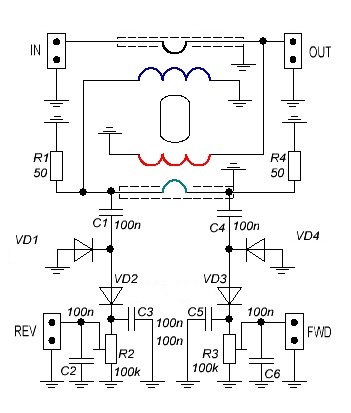
For VD Diodes , i am using BAT41 diodes or 1N5711 . For R1 and R4 since i do not have 50R Resistor , i am using 47R 5w resistor . The Menu is offering to adjust the Resistor Value.
The gerber file for the SWR bridge : https://drive.google.com/file/d/1i1FAbeb4EyGl6EbUAo1TmMHviFV_yVLi/view?usp=sharing
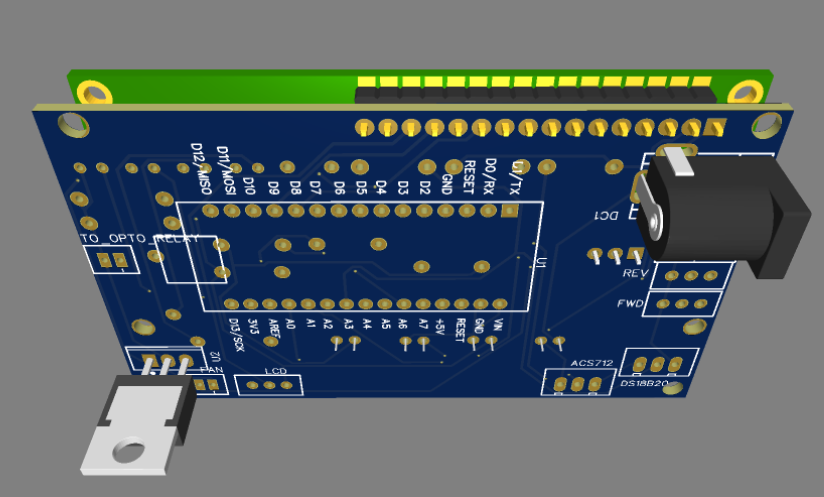
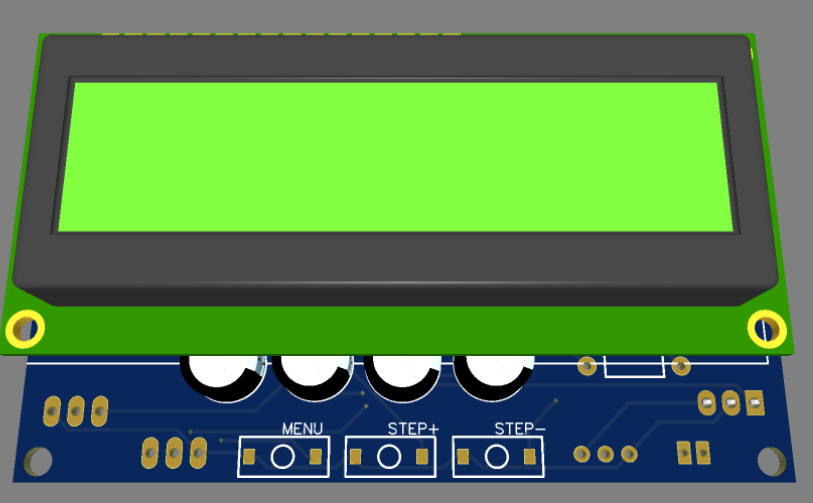
Since i have this kind of relay , this is an easy integration for the opto relay output.

Automatic band decoding with RF Detection
This is the VK5TM’s design populated for easy implementation.
More details and gerber files are here : https://easyeda.com/F5NPV
The main purpose of this circuit is to provide automatic band switching capabilities for LPF to any radio rig. The main principle is RF detection during tuning and use the PIC as a frequency counter and switch. All my tests and experimentation was performed with TINYSA , a NANOVNA or a SARK100 on the high level RF input.
The final implementation i am using the Low level input with a ferrite core . i wrap few turn on the core to achieve a RF sample to the PIC (You need to test according the core you are using)
I have included the following features:
-PTT circuit
-High level RF input (You can tap directly on your low power input from 1 to 5w)
-Low level RF input (a simple tiny antenna is sufficient or few turns on a ferrite core)
-A switch in order to switch the RF level input . I am using a 2P switch with a middle neutral position to cancel any RF input.
-Instead of using an ULN2803 , i am using an ULN2804 since my LPF are all using 12vdc relays
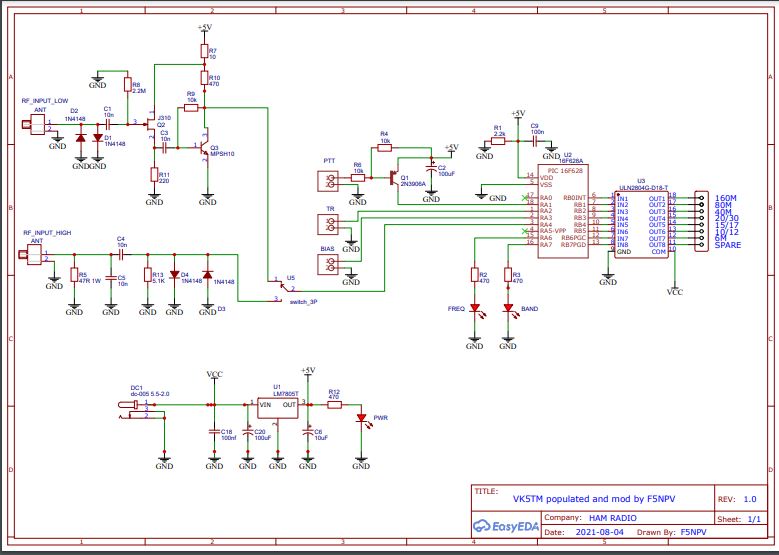
https://www.vk5tm.com/homebrew/freq_switch/freq_switch.php
I am using this design with my 30w Mosfet and 300w LDMOS amplifiers. So far this system is working quit well


My Pickit3 Tool :
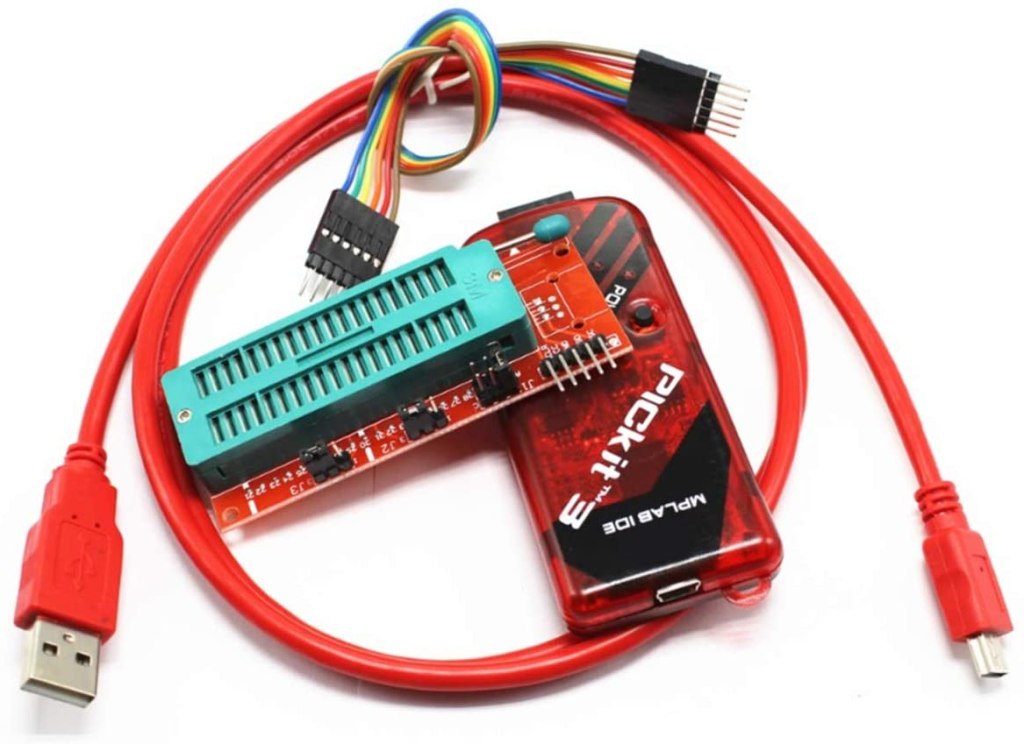
All will be populated all in one , so stay tuned for the final result ………….
The PIC16F628A I/F ASM code
;********************************************************************
; VK5TM Frequency Dependant Switch
; VK5TM_FDS_PTTV0_3.asm
;
; Original code & hardware design by Peter Rhodes, BSc, G3XJP
; See RSGB Radcom magazine Sep to Dec 2001
;
; Modified by Terry Mowles VK5TM Aug 2019
;
; Modifications:
; Remove EEProm storage of variables - converted to tables.
; Remove changing variables using jumper method.
; Works from PTT activation only.
; Converted to 16F628A running on internal oscillator.
; Changed filter outputs to all PortB.
; Rearranged all other inputs/outputs to PortA.
;********************************************************************
errorlevel -302, -305 ; Skip nuisance messages
LIST P=PIC16F628A
INCLUDE P16F628A.inc
__config _CP_OFF&_LVP_OFF&_BODEN_OFF&_MCLRE_OFF&_PWRTE_ON&_WDT_OFF&_INTOSC_OSC_NOCLKOUT
#define PTT PORTA,1
#define TR_relay PORTA,2
#define bias PORTA,3
#define RF PORTA,4
#define LED1 PORTA,6 ; Frequency measured
#define LED2 PORTA,7 ; Channel change
; decimal #'s following equal time in mS (approx)
#define tA d'15' ; T/R relay operate delay time
#define tB d'15' ; bandsw relay operate time
#define tC d'8' ; bandsw relay release time
#define tD d'20' ; Bias operate delay
#define tE d'10' ; Debounce time
CBLOCK 0x20 ; Start Data Block
delay1 ; misc counters for use in time delays
delay2
delay3
freq ; cache for freq count
repeat ; number of extra times freq is counted
oldCh ; last channel in use
temp ; general purpose transient variable
r_data
endc
;;;;;;;;;;;;;;;;;;;;;;;;;;;;;;;;;;;;;;;;;;;;;;;;;;;;;;;;;;;;;;;;;;;;;;;;;;;;;;;;;;;;;;;;
org 0
goto main
org 4
goto main
channel;
addwf PCL,f ; Band Count Dest
retlw b'00100000' ; 10m -> initial start-up band
retlw b'00000001' ; 160m 1 RB0
retlw b'00000010' ; 80m 2 RB1
retlw 0 ; 3 error
retlw b'00000100' ; 40m 4 RB2
retlw b'00001000' ; 30m 5 RB3
retlw b'00001000' ; 30m 6 RB3
retlw 0 ; 7 error
retlw b'00001000' ; 20m 8 RB3
retlw 0 ; 9 error
retlw b'00010000' ; 17m 10 RB4
retlw 0 ; 11 error
retlw b'00010000' ; 15m 12 RB4
retlw 0 ; 13 error
retlw b'00100000' ; 12m 14 RB5
retlw 0 ; 15 error
retlw b'00100000' ; 10m 16 RB5
retlw b'00100000' ; 10m 17 RB5
main
clrf PORTA ; initialise
clrf PORTB ; initialise
movlw 0x07 ;
movwf CMCON ; Turn off comparators
bsf STATUS,RP0 ; to Bank 1
movlw b'10100111' ; prescale /256 to RA4, no pull-ups
movwf OPTION_REG
movlw b'00010010' ; RA1 & RA4=input
movwf TRISA
clrf TRISB ; PortB all outputs
bcf STATUS,RP0 ; back to Bank 0
movlw 0 ; initialise startup band
call channel
movwf r_data
call new_Ch ; do it!
initialise ; clear all outputs (except filter) to Rx state
bcf bias ; turn off bias output
movlw tC ; Relay release time
call w_mS ;
bcf TR_relay ; turn off T/R relay after delay
nop ; nop for port read/modify/write problem
bcf LED2
nop
bcf LED1
wait_Tx
btfsc PTT ; is PTT activated?
goto wait_Tx ; if not, go back and wait
movlw tE ; PTT debounce
call w_mS
btfsc PTT
goto wait_Tx
btfsc RF ; Wait for RF input
goto $-1
; Measure freq. Potential errors are:-
; Tx stops/starts while measuring
; out of band measure
; no count, not enough power
; successive counts not same
movlw d'4'
movwf repeat ; # times to repeat
call freqcount ; measure once
movwf freq ; and retain
btfsc STATUS,Z ; test for zero
goto initialise ; zero or > 10m error
bsf LED1 ; light Frequency measured LED
freq_again
call freqcount ; measure again
subwf freq,w ; compare
btfss STATUS,Z ; same?
goto initialise ; not same freq error
decfsz repeat ; all done?
goto freq_again ; no, so loop
movf freq,w ; yes, all OK, continue
call channel
movwf r_data
iorlw 0x00 ; Test if 'W' is 0
btfsc STATUS,Z ; zero?
goto initialise ; yes out of band error
subwf oldCh,w ; compare old
btfss STATUS,Z ; same?
call new_Ch ; it is different
movlw tA ; T/R relay time
call w_mS ; and delay for w mS
bsf TR_relay ; to transmit
movlw tD ; Bias relay delay time
call w_mS ; and delay for w mS
bsf bias ; turn bias on
nop
bcf LED2 ; and LED2 Channel change off
btfss PTT ; wait for PTT to be released
goto $-1
goto initialise
; FREQUENCY COUNT
freqcount
clrf TMR0 ; reset & start count
call delay_150uS
movf TMR0,w ; end & latch result
movwf temp ; preserve w
sublw d'17' ; max legal count
btfss STATUS,C ; test for >max?
clrf temp ; count was >max
movf temp,w ; recover w
return ; with count in w (0 if error)
new_Ch ; NEW CHANNEL NEEDED
bsf LED2 ; Channel change LED on
movf r_data,w ; get new Ch
movwf oldCh ; overwrite old
iorwf PORTB,f ; start 'make' new
movlw tB ; operate time
call w_mS ; complete 'make'
; break old channel
movf oldCh,w ; now current Ch
movwf PORTB
return
delay_150uS
;PIC Time Delay = 0.00014900 s with Osc = 4,000,000 Hz
movlw D'48' ; Adjust up or down if BIAS LED
movwf delay1 ; doesn't light on some channels
; or band switching is intermittent on some bands
loop
decfsz delay1,f
goto loop
return
;
; DELAY LOOP 1 millisecond
one_mS
movlw d'4'
movwf delay1
loop1
movlw d'81'
movwf delay2
loop2
decfsz delay2
goto loop2
decfsz delay1
goto loop1
return
; DELAY LOOP w milliseconds (roughly)
w_mS
movwf delay3
w_mS_loop
call one_mS
decfsz delay3
goto w_mS_loop
return
END
;--------------------------------------------------------------------------------

hello didier
I noticed that in the Automatic Band decoder, the pin connection of your MPSH10 seems to be different from that of the original author’s VK5TM? In your circuit the RA4 pin of the PIC is grounded. Can both circuits be used normally?
73
Trendy
LikeLike
Hello Trendy,
i have corrected the schematic months ago but forgot to update the website but on EASYEDA the schematic is correct. i put mow the correct schematic on the website.
73s Didier
LikeLike
Thank you, didier.
I noticed that your PTT interface should be active at low level. When the PTT terminal is shorted, the control circuit takes effect, right?
And I also noticed that it seems that the schematic on easyEDA is still wrong, it seems that you forgot to correct it.
73
Trendy
LikeLike
Hello,
Yes the PTT is active when pulled low (Shorted with the ground) and will trigger the frequency counting from the PIC.
Currently i have a very limited spare time due to my office work. can you please pinpoint where there is an error. Reccently VK5TM had reviewed the schematic and the only error he had noticed was regarding MPSH10.
i will be able to work on this coming week end , during weekday i am terribly busy for now .
My email adress if you can send me more details , a modified shematic (the schematic from EASYEDA can be downloaded and modified)
73s
LikeLike
Hello Again,
Ok i manage to find the issue and was regarding the output from the MPSH10 to RA4 . i have modified the easyda Sheet and PCB
73S
Didier
LikeLike
Thank you again, didier
Thank you very much for taking time out of your busy schedule to reply to me.
I noticed that the schematic diagram on your webpage has modified the RA4 pin to be the same as VK5TM, so I will take the schematic diagram on this website as the standard. RA4 should be connected to collector of MPSH10, right?
But it seems that you forgot to save the modification on easyEDA. When I enter easy EDA to check, it still has not changed.
In addition, the RF_INPUT_LOW you mentioned refers to winding the enameled wire on the magnetic ring for a certain number of turns, then passing through the RF input wire, and connecting the two ends of the enameled wire to the “RF_INPUT_LOW” port, is it?
Good luck with your work.
73
Trendy
LikeLike
Hello,
i think there is an issue with EASYEDA website because when you open the schematic with the editor you will find the corrected one. Yesterday when i modified the schematic with the editor it takes for ever to save it.
i will try again after after work to figure out why the schematic on the main EASYEDA web page is not taking into account the modify schematic from the EASYEDA editor.
73s Didier
LikeLike
Hello Didier
I checked EasyEDA again and found that it has been updated.
Regarding the “RF_INPUT_LOW” port problem I mentioned, is it correct? Looking forward to your reply.
Thank you again.
73
Trendy
LikeLike
Hello,
Yes this the RF_INPUT_LOW and the output of the MPSH10 transistor
73s Didier
LikeLike
Hello Didier
For RF_INPUT_LOW, how many turns on the ring do you think I should try initially? I may use FT50-43 magnetic ring.
Also if you are free, I hope you can upload a video of the power amplifier with automatic band selection on youtube. It’s okay if you’re busy all the time.
Thank you once again.
73
Trendy
LikeLike
Hello,
you will need to make some test. Myself i use generally 20 to 30 turns. They main concern it to avoid voltage above 5v peak to peak if the output of the ring average is about 2 volts peak to peak is fine.
73s Didier
LikeLike
OK,I see.
Thank you.
73
Trendy
LikeLike
Hi, on Amp Controller schematic variable resistor values shown as 50K but the part number is 10Ohm. Which one is correct value?
LikeLike
Hello ,
it is 50k variable resistor
73s Didier
LikeLike
I have checked again, the sketch you have given, does not detect the DS18B20 nor the ACS712 in the circuit you have published. also all the switches are operating as menu. can you please send me a checked and updated firmware, it will be a great help. my email id is deynet@gmail.com. my call VU3FBT
LikeLike